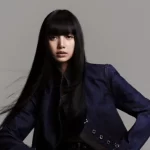From unsung talents like Ann Lowe to the more well established, like Gabrielle Chanel, “Women Dressing Women” will explore much more than fashion.
In this age when identity is paramount to societal and political debate, the Metropolitan Museum of Art is gearing up to unveil “Women Dressing Women” at the Costume Institute.
As the name makes clear, the exhibition will highlight female designers whose work helped define 20th century fashion. Opening Dec. 7, it will feature 80 pieces from the museum’s permanent collection. Along with well-entrenched names in the fashion landscape, like Claire McCardell, Miuccia Prada, Madeleine Vionnet and Vivienne Westwood, less-heralded designers like Ann Lowe, Adèle Henriette Nigrin Fortuny, Isabel Toledo, Yeohlee Teng and No Sesso’s Pia Davis and Autumn Randolph will be highlighted. Indubitably, big-names like Gabriela Hearst and Comme des Garçons Rei Kawakubo will reel in some of their cult-like followers up the museum’s Fifth Avenue steps, through its main entrance and into the Costume Institute.
The range of garments that will be on view should generate further discussion beyond provenance and aesthetics. Scheduled to be on view until March 3, “Women Dressing Women” will explore four areas — anonymity, visibility, agency and absence/omission — and how the industry has been a “powerful vehicle for women’s social, financial and creative autonomy,” according to press information announcing the show. Museum patrons will also learn about the identities, mentorships and other connections that tied some of these designers together.
The start of “Women Dressing Women” could be a bit of a culture shock to some in today’s designer-worshipping crowd. It will open with a closer look at anonymous dressmakers “as a type of collective ancestor leading to the present-day eponymous designer.”
Visitors will find in the Carl and Iris Barrel Apfel Gallery, garments created by women who established themselves as couturiers in Paris and outline how fashion led to greater autonomy for women. Mad Carpentier, for example, was an American house led by Mad Maltezos and Suzie Carpentier and was based in Paris in the 1940s. The generational shifts that stemmed from a greater sense of agency — how fashion has parlayed into political and bodily expression — will be highlighted in designs from the ’60s through the present that will be on view in the Lizzie and Jonathan Tisch Gallery.
The exhibit will wind down with stories of absence or omission through the creations of more unsung designers like Lowe, who was known as “society’s best kept secret,” but eventually became the first nationally known Black female fashion designer. But that took some time. Despite having designed Jacqueline Bouvier’s off-the-shoulder lace wedding dress for her 1953 Newport, Rhode Island, nuptials to then-Sen. John F. Kennedy, Lowe was largely unrecognized for a good part of her career. Her perseverance helped to inspire other generations of Black designers. Another behind-the-scenes talent, Fortuny, who played a key part in the 1909 design of the groundbreaking “Delphos” gown, will also be in the spotlight.
Lowe is having a bit of a moment posthumously beyond this fall’s Costume Institute show. “Ann Lowe: American Couturier,” the largest exhibition of her work, will debut at Winterthur, a museum, garden and library in Wilmington, Delaware, on Sept. 9. Rizzoli will publish a book by the same name on Sept. 5. In addition, a two-day symposium about the designer, “In the Legacy of Ann Lowe: Contemporary American Fashion” will be held at Winterthur on Oct. 20 and 21.
Interest in the ever-functional and timeless McCardell’s designs has also been on the rise, due partially to Tory Burch, who cited the designer as an inspiration in 2021. Burch also established a fellowship in McCardell’s name with the Maryland Center for History and Culture. McCardell’s designs are featured in a new exhibition there, as well as one at the Washington County Museum of Fine Arts in Hagerstown, Maryland.
All in all, the fall exhibition will offer a who’s-who selection celebrating standout signature pieces by Sarah Burton, Gabrielle Chanel, Ann Demeulemeester, Elizabeth Hawes and Jeanne Lanvin, among others. (Every item in the show is being culled from the permanent collection.) The exhibition could introduce some Gen Zers to esteemed designers like Germaine Émilie Krebs, who created under the names Alix and Mme. Grès, or Elsa Schiaparelli.

To keep things current, work from the digitally minded and futuristic Iris Van Herpen, Hillary Taymour for Collina Strada, Anifa Mvuemba for Hanifa, Norma Kamali, Ester Manas, Jamie Okuma, Simone Rocha, Marine Serre and others will be shown to address such issues as collaborative practices and sustainability.
The exhibition is being organized by The Costume Institute’s associate curator Mellissa Huber and guest co-curator Karen Van Godtsenhoven.
In a statement, The Met’s Marina Kellen French Director and chief executive officer Max Hollein noted that the exhibition will continue the museum’s dedication to amplify historically underappreciated voices, while celebrating the work of those who have become household names.
The Wendy Yu curator in charge, Andrew Bolton, noted in the press release that the Costume Institute’s founding members included several inspiring women and the department remains dedicated to “recognizing the artistic, technical and social achievements of women.”
“Women Dressing Women” and its companion catalogue are made possible by Morgan Stanley.
Source : WWD




























